|
|
|
Hansen's Northwest Native Plant Database |
|
|
Northwest Native Oregon Grape (Berberis or Mahonia) |
|
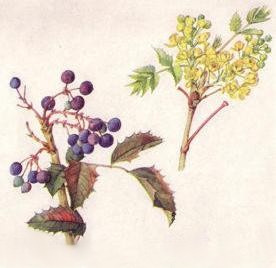 |
|
The Northwest Native Berberis (Oregon Grape) is a beautiful and very useful
ornamental shrub from the Western USA. Once known as Mahonia, the
currently accepted scientific name is Berberis. Common names for this genus
include Barberry and Holly-Grape. There are four Berberis species native to Oregon. These are wonderful plants, each with different characteristics – each useful for different purposes. They have tough, evergreen leaves, edible dark blue, fruit and attractive yellow flowers. All have yellow inner bark and spread by underground runners. Leaves are alternate, pinnately compound with 3 to 21 leaflets, depending on the species. All northwest Berberis develop some bronze leaf colors in the sun: they stay greener in the deeper shade. |
|
| Culture: Mahonia is nursery propagated from seed and germination can be a problem. The most common nursery practice is to sow fresh seed in the Fall and let a cold winter break the seed dormancy. When transplanting in the early Spring, expect the existing leaves to die back and a bit later, new buds will form. When I first started growing this plant, I thought the plants had all died in April and by July they were doing great! |
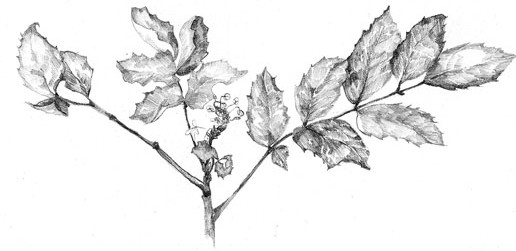 |
|
Berberis are succeptible to few diseases, at least here in Oregon.
However, Leaf Spot or Rust are occasionally a problem. Rust can be treated
with a fixed
copper spray or Daconil. Always remove and
destroy infected leaves. Use in every Northwest garden. Tends to form clumps. If this beautiful plants gets too tall or "leggy" prune it back – rather hard if you wish. This species found on dry to moist well drained sites, sun or shade, from British Columbia to Northern California on the West side of the Cascade Mountains and in NE Oregon. Birds and animals love the fruit – rather tart and seedy. It does make a very good jelly! Florists use the foliage of this shrub for greenery. Click on links below for photos and details of each plant. |
|
| Berberis aquifolium (Tall Oregon Grape): This superb evergreen shrub is the State flower of Oregon. Can get 10 ft tall, but usually 5 ft in gardens. Large clusters of small golden yellow flowers on shiny dark green, holly-like foliage in the spring. New growth is copper color in the spring. Blue fruits are tart - often used for jelly. Use for hedges, borders and drifts. Sun or shade (fairly tolerant of shade). Drought tolerant. Perfect for the Northwest and all similar climates. |
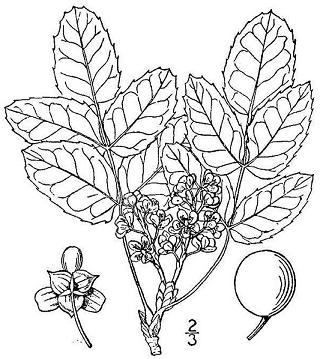 |
| Berberis nervosa (Cascade Oregon Grape, Long Leaf Oregon Grape, Dwarf Oregon Grape): Flowers and berries are nearly identical to Mahonia aquifolium, above, but this is a low growing plant. Similar to Tall Oregon Grape, but longer leaves and a different form -- 2 ft tall. Same beautiful flowers and fruit as Tall Oregon Grape. Widespread in open forest areas. Excellent ground cover. Likes part shade. and is tolerant of deep shade. Probably more plentiful in Western Oregon than Tall Oregon Grape. This plant seldom get over 30 inches tall and has long leaf stems to 16 inches and 11 to 21 leaflets, all dark glossy green. Also used by Florists for arrangements. Loved by birds and animals. Same yellow flowers and dark blue, edible fruit. Found from British Columbia South into Northern California and in NE Oregon and Idaho. |
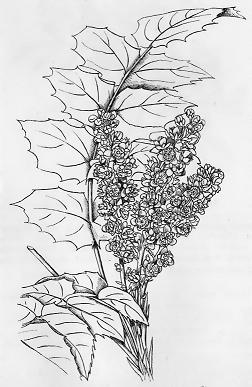 |
| Berberis repens (Creeping Oregon Grape): Low growing, spreading evergreen ground cover (10-14"). Superior ground cover of the Oregon Grape species. Dull green leaves, yellow flowers, blue-purple edible fruits. (Note – the dull leaves distinguish this species from the other two. Likes sun or shade. Has 3 to 7 leaflets. Recommended to cover large open areas not suitable for lawn. Will often take root at the nodes. Drought resistant after established. Browsed by some deer. Found in dry, sun or shade areas in well drained sites on the East side of the Cascades from British Columbia to Northern California and East into Idaho. Also found in the Sierra Nevada Mountains, the Rocky Mountains and the Black Hills. Brilliant fall color! |
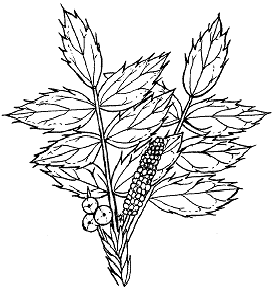 |
|